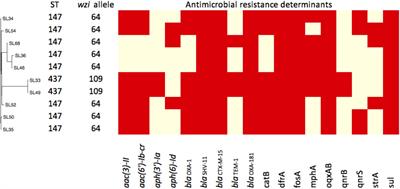ORIGINAL RESEARCH
Published on 09 Aug 2019
High Prevalence of Metallo-β-Lactamase-Producing Enterobacter cloacae From Three Tertiary Hospitals in China

doi 10.3389/fmicb.2019.01610
- 8,122 views
- 37 citations
34k
Total downloads
177k
Total views and downloads
ORIGINAL RESEARCH
Published on 09 Aug 2019

ORIGINAL RESEARCH
Published on 18 Apr 2019

ORIGINAL RESEARCH
Published on 11 Feb 2019

REVIEW
Published on 30 Jan 2019

ORIGINAL RESEARCH
Published on 15 Jan 2019

REVIEW
Published on 27 Nov 2018

ORIGINAL RESEARCH
Published on 22 Nov 2018

ORIGINAL RESEARCH
Published on 21 Nov 2018

ORIGINAL RESEARCH
Published on 13 Nov 2018

ORIGINAL RESEARCH
Published on 30 Oct 2018

ORIGINAL RESEARCH
Published on 23 Oct 2018

ORIGINAL RESEARCH
Published on 31 Aug 2018
